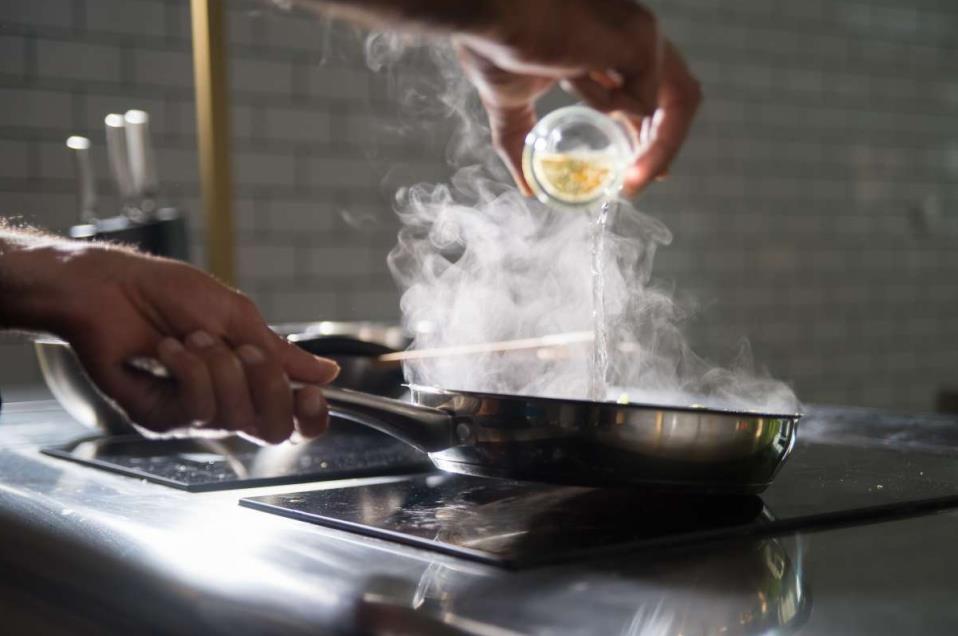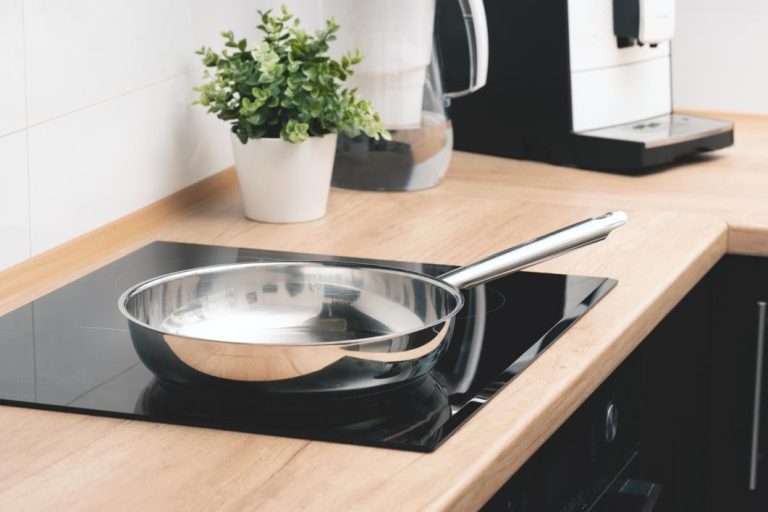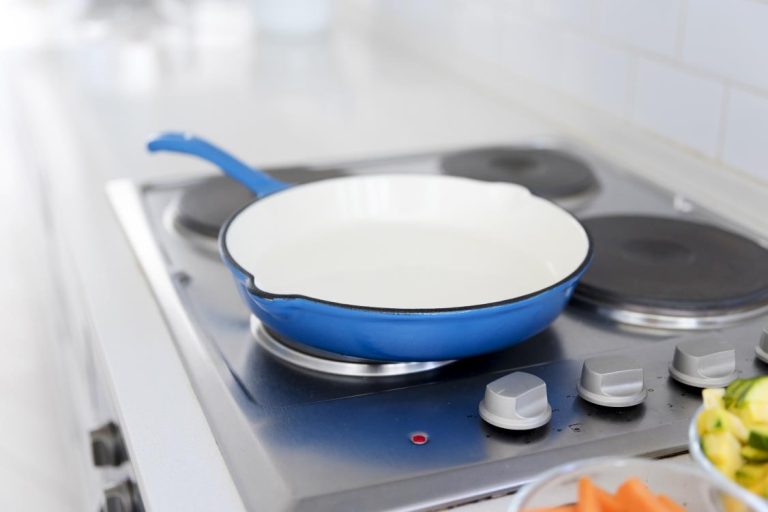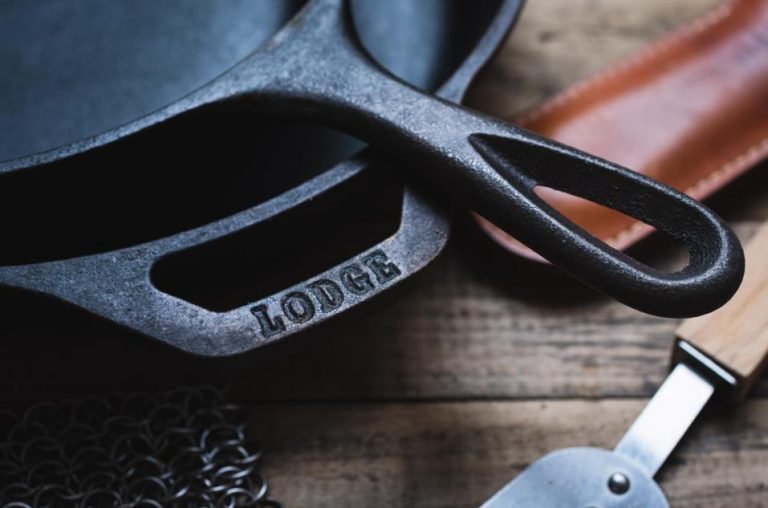Cooking with cast iron on a glass-top stove is straightforward with a few tips and tricks in hand. Many home cooks like cast iron because it heats evenly and lasts a long time. However, using it on a glass-top stove may present some difficulties.
In this post, we’ll discuss how to use cast iron on a glass-top stove, tips and tricks for using an iron skillet, and how to make the most of it. So, let’s get started!
What’s a glass-top stove?
A glass stovetop, also known as a ceramic stovetop or a glass-ceramic stovetop, is a type of stove that features a smooth, flat glass surface as the cooking area. This type of stove is gaining popularity among home cooks due to its attractive appearance and ease of cleaning. Glass stovetops can be powered by either electricity or gas.
The flat surface on a glass stovetop serves as a cover for the heating elements, providing a consistent and even cooking surface. The heat is spread out evenly, ensuring that food is cooked consistently and thoroughly. With a glass stovetop, there is no need to worry about hot spots or uneven heating results.
What is a glass-top stove made of?
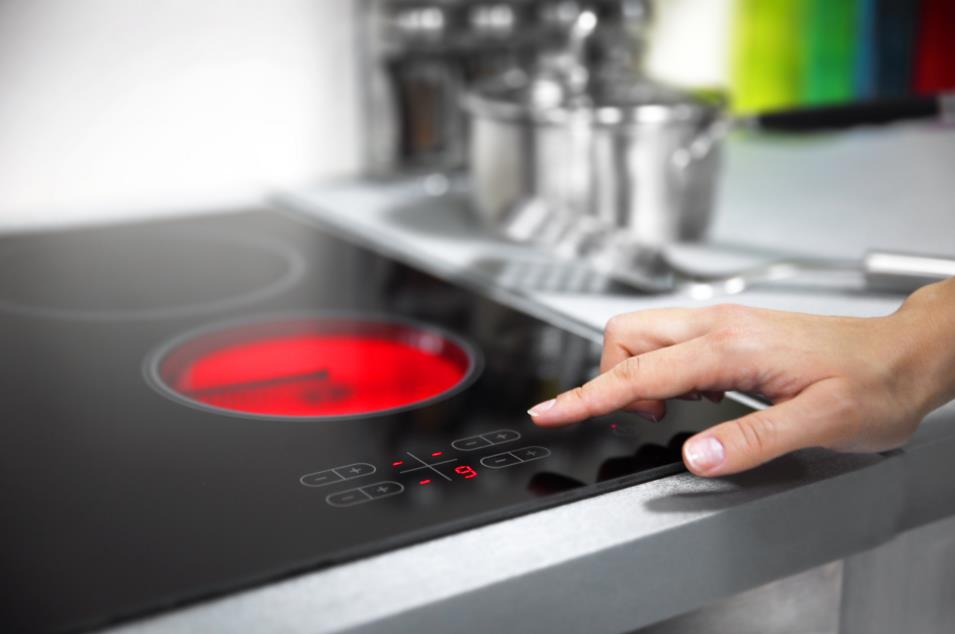
Most glass-top stoves are made of tempered glass that’s resistant to cracks and chips, making it a safe option for stovetops.
For those who are looking for a sleek appearance, there are also glass-top stoves with stainless steel accents available. Whether your customers are seasoned pros or just starting out, using cast iron on a glass-top stove can be a breeze with the right information and techniques.
What is cast iron
Cast iron cookware has a long history that dates back to ancient China where it was first used for cooking. Over the centuries, it became popular in Europe and eventually spread to the rest of the world, becoming an indispensable kitchen tool in many households.
It is made from a material composed of iron, carbon, and silicon. It’s made by melting iron and other metals together and then casting it into molds to form different types of kitchenware.
Cast iron cookware is known for its versatility, as it can be used on the stovetop, in the oven, on the grill, and even over an open flame. It is also incredibly durable and can last for generations with proper care and maintenance.
Its ability to retain heat well makes it an excellent choice for cooking and baking.
Advantages of cast iron cookware
Small business owners and entrepreneurs frequently include cast iron in their product offerings due to its strong and long-lasting qualities. And here is why you should too:
- Durability. Cast iron is a strong and durable material that can withstand high temperatures and heavy use.
- Heat retention. Cast iron can maintain a consistent temperature for longer.
- Even heating. It distributes heat well, cooking food all the way through.
- Versatility. They can be used on various cooking surfaces, including stove tops, ovens, and grills.
In addition to that, it is also favored for its non-toxic properties.
Enameled cast iron
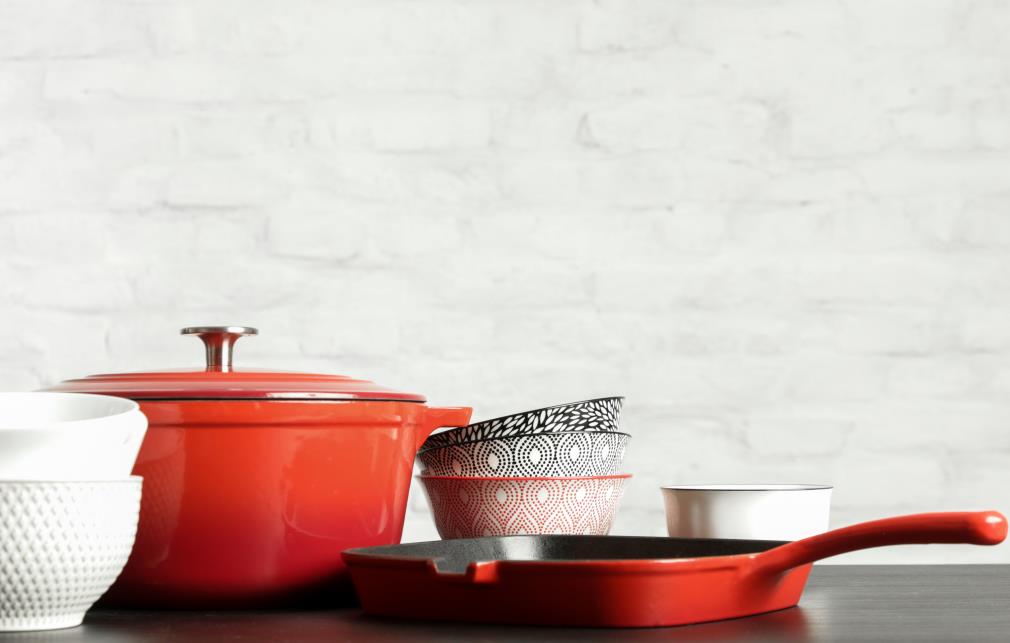
A close relative of cast iron cookware is enameled cast iron. Enameled cast iron is coated with a layer of enamel, creating a smooth, non-stick surface that is easier to clean than traditional ones. Unlike the original version, enameled cast iron does not need to be seasoned and does not rust.
Additionally, enameled cast iron is available in a variety of colors, allowing you to choose a cookware piece that fits with your kitchen décor. This type of cast iron also retains heat well, making it ideal for slow-cooking stews and sauces.
Cooking with Cast Iron on an Electric Glass-Top Stove
While using cast iron on an electric glass-top stove is possible, it is important to take necessary precautions to protect the glass surface. Cast iron pans can be heavy and prone to sliding which may cause scratches or damage to the glass surface.
To avoid damaging the glass-top stove, it is recommended to place a protective barrier, such as a stovetop griddle or trivet, between the cast iron pan and the stove. This will prevent any direct contact and potential scratches.
It is also important to not slide the cast iron pan around on the stovetop, as this can cause damage to the glass surface. Instead, it is best to lift and place the pan in a steady position.
Different types of cast iron pans may have different sizes and weights, so it may be necessary to try out different sets to find the one that works best for your electric glass-top stove. Keep in mind these precautions and follow best practices for your customers to use cast iron on their glass-top stoves safely and effectively.
To help you decide on the best material, check out our article about the best cookware materials.
Buy Wholesale Cookware and Start Scaling up with Us Today
Contact us and connect with a sales rep to get a free quote.
10 tips for using cast iron on a glass-top stove

While using cast iron on a glass-top stove, it is important to take steps to protect the glass surface.
By following these tips, the benefits of cooking with cast iron can be enjoyed while keeping the glass stove top in its best condition:
- Cast iron cookware must be clean and free of debris before placing it on the stovetop.
- No sliding the cast iron pan on the glass surface. Cast iron pans with rough or jagged bottoms should be avoided at all costs.
- Use a heat-resistant trivet or pad to protect the glass surface from scratches or chips.
- Enameled cast iron pans, shouldn’t be used with metal utensils as they can scratch the enamel.
- Avoid exposing the glass stove top to extreme temperature changes. No placing a cold cast iron pan directly on a hot glass surface, as this can cause the glass to crack.
- Allow the glass to cool down before wiping it clean and avoid direct contact with any heat sources such as open flames or hot ovens.
- Make sure the cast iron pan is dry before using it on the glass stove top. Any moisture or dampness can cause the glass to crack or shatter.
- If possible, adjust the heat settings on your stove to match the size and thickness of the cast iron pan. A smaller pan may need less heat, while a larger pan may require more heat to cook evenly.
- Avoid leaving the cast iron pan on the stovetop for extended periods of time, especially if it is empty or contains only a small amount of food.
- Regularly inspect the bottom of the cast iron pan to ensure it is not warped, bent or damaged, as this can cause the pan to sit unevenly on the glass stove top and potentially cause damage.
Key takeaways
Using cast iron cookware on glass-top stoves is a hot topic among home cooks and professional chefs. Cast iron is known for its ability to distribute heat evenly and retain heat for a long time, making it a popular choice for cooking.
The key to using cast iron on a glass-top stove is to use low to medium heat and to handle the cookware properly.
When it comes to selling cast iron cookware, it is important to emphasize its benefits and the reasons why it is a must-have kitchen tool. Cast iron is perfect for home cooks and professionals alike and is available in a variety of shapes and sizes, making it a versatile and flexible option for any kitchen.
Contact us anytime if cast-iron cookware is on your agenda after this article, and we’ll give you a free quote within two days.
